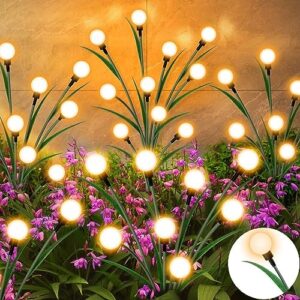Picture this: You’re out in your garden, admiring your beautiful plants and flowers when suddenly, you notice something isn’t quite right. The leaves are yellowing, there are strange spots appearing, and worst of all, some of the plants look like they’re being attacked by tiny insects. What could be causing all of this devastation?
The answer lies in some of the most common plant pests and diseases that can wreak havoc on your beloved garden. From fungus to aphids, these pesky intruders can quickly turn a thriving garden into a wilting mess if left unchecked. Let’s take a closer look at some of the most common culprits and how you can keep your plants healthy and pest-free.
Fungus is one of the most common plant diseases that gardeners have to contend with. It can manifest in various forms, such as powdery mildew, black spot, and rust, and is caused by fungal spores that thrive in damp, humid conditions. These spores can spread quickly through the air and infect plants, causing leaves to yellow, wilt, or develop strange spots.
One of the best ways to prevent fungus from taking hold in your garden is to practice good plant hygiene. This includes properly spacing out your plants to promote air circulation, avoiding overhead watering, and removing any infected leaves or plants as soon as you notice signs of disease. Additionally, you can use fungicides to treat existing fungal infections and prevent them from spreading to other plants.
Another common plant pest that can cause headaches for gardeners is the aphid. These tiny insects feed on the sap of plants, causing leaves to curl, wilt, or turn yellow. Aphids can reproduce rapidly, making them a particularly troublesome pest to deal with. They are often found on the underside of leaves, where they can go unnoticed until they have already caused significant damage.
To keep aphids at bay, you can encourage natural predators like ladybugs and lacewings to your garden. These beneficial insects feed on aphids and can help to keep their populations in check. Additionally, you can use insecticidal soaps or neem oil to treat aphid infestations and protect your plants from further damage.
Other common plant pests and diseases that gardeners may encounter include spider mites, whiteflies, and blight. Spider mites are tiny arachnids that feed on the sap of plants, causing leaves to discolor and develop a fine webbing. Whiteflies are small, winged insects that feed on plant sap and can transmit viruses to your plants. Blight is a bacterial or fungal disease that causes leaves to develop dark spots or lesions and can quickly spread throughout your garden.
Preventing and treating these pests and diseases requires a combination of good gardening practices and targeted treatments. Regularly inspecting your plants for signs of pest or disease, practicing crop rotation, and properly watering and fertilizing your plants can help to keep them healthy and resilient against common garden intruders.
In conclusion, from fungus to aphids, there are a plethora of common plant pests and diseases that can threaten the health and vitality of your garden. By staying vigilant, practicing good plant hygiene, and using targeted treatments when necessary, you can keep your plants thriving and pest-free. So the next time you’re out in your garden, keep an eye out for signs of trouble and take action promptly to protect your plants from these pesky intruders. Your garden will thank you for it!






